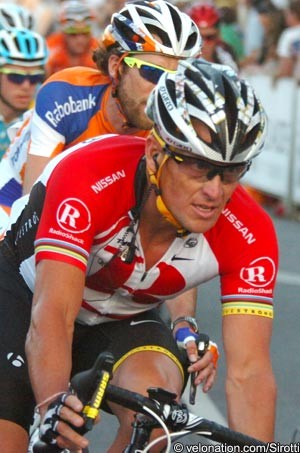Foundation trying to limit negative impact from former pro’s doping past
 Weeks after he stood down as its chairman, Lance Armstrong has taken the further step of resigning from the board of the Livestrong Foundation. The move, which sees the Texan end his ties with the foundation he set up in 1997, is taken amid concerns that his damaged reputation will have a negative effect on fundraising.
Weeks after he stood down as its chairman, Lance Armstrong has taken the further step of resigning from the board of the Livestrong Foundation. The move, which sees the Texan end his ties with the foundation he set up in 1997, is taken amid concerns that his damaged reputation will have a negative effect on fundraising.
According to Bloomberg, foundation officials have been worried that the fallout from the USADA investigation, which showed that he used banned substances for much of his professional cycling career, would lead to less people donating.
On October 17th Armstrong released a statement saying that he was stepping back from his position at the head of the foundation.
“This organization, its mission and its supporters are incredibly dear to my heart,” he said then. “Today therefore, to spare the foundation any negative effects as a result of controversy surrounding my cycling career, I will conclude my chairmanship.”
At the time the foundation said that he would remain a board member but his negative public image has forced him to now retreat further.
According to the new chairman Jeff Garvey, the former pro took the decision in order “to spare the organization any negative effects as a result of controversy surrounding his cycling career. We are deeply grateful to Lance for creating a cause that has served millions of cancer survivors and their families.”
Foundation spokeswoman Katherine McLane declined to say if he would have any other involvement in the future, including fundraising or speaking at events.
“Lance remains the creator and inspiration of the Livestrong foundation and for its mission — providing free financial, practical and emotional support services for cancer survivors and their families,” she told Bloomberg in an email.
Armstrong has never admitted taking banned drugs but his protestations became increasingly hollow following the sworn testimony of 26 individuals, including eleven former team-mates. Many of them said that they saw him doping and, more seriously, that he encouraged and in some cases even demanded that they take the substances in order to help him win the Tour de France.
In August, he was handed a lifetime ban and had his results since August 1998 stripped away. These sanctions were accepted last month by the UCI. WADA, the only other body able to appeal to the Court of Arbitration for Sport, has said that it too does not oppose USADA’s verdict.
At the height of his career and again after his return in 2009, a large number of fans wore yellow Livestrong bracelets as a sign of solidarity with the cause and the rider. His implication in doping has seen a marked fall-off in the wearing of these bands and also the use of Livestrong ‘Twibbons,’ or pictorial representations of bands on Twitter profile pictures.
LiveStrong’s ending of ties with the Texan is an attempt to prevent any further erosion of support.
Meanwhile Armstrong continues to goad his detractors, releasing a picture via his Twitter account which saw him relaxing in his home close to seven framed and wall-mounted yellow jerseys.
Tour de France organiser ASO said after the USADA and UCI decisions that it now considers there to be no winner of the 1999 to 2005 Tours.